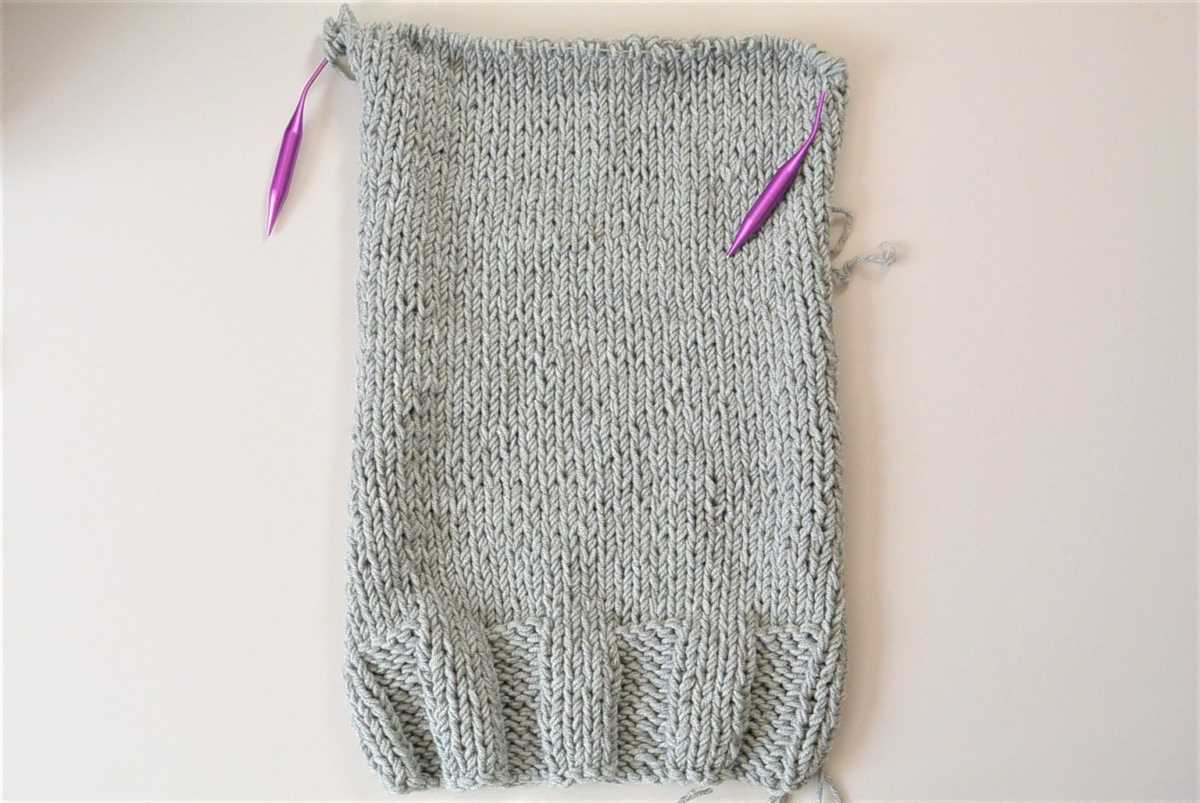
Chunky knitting patterns are a great way to create cozy and stylish accessories and garments. With their thick and chunky stitches, these patterns are perfect for beginners or for anyone who wants to finish a project quickly. The large needles and bulky yarn make for fast and satisfying knitting, and the resulting creations are warm and comfortable to wear.
There are endless possibilities when it comes to chunky knitting patterns. From scarves and hats to sweaters and blankets, the options are limitless. Chunky knit blankets, for example, are not only practical, but they also add a touch of elegance and coziness to any room. Chunky knit hats and scarves are perfect for staying warm during the colder months, with their thick stitches providing extra insulation.
One of the great things about chunky knitting patterns is that they can easily be customized to fit your style and preferences. Whether you prefer classic and timeless designs or modern and trendy styles, there is a pattern out there for you. And with the availability of chunky yarn in a wide range of colors and textures, you can create unique and personalized pieces that are truly one-of-a-kind.
What is Chunky Knitting?
Chunky knitting is a popular style of knitting that produces thick and cozy garments. It involves using thick, bulky yarn and larger knitting needles, resulting in a chunky, textured fabric. Chunky knitting patterns are known for their simplicity and speed, making them a great choice for beginners or those looking for quick and satisfying projects.
Key to chunky knitting is the use of thick yarn, which is typically made from natural fibers such as wool or acrylic. The thickness of the yarn creates a lofty and warm fabric, perfect for cold weather accessories like hats, scarves, and blankets. The larger needles used in chunky knitting allow for a looser gauge, meaning the stitches are larger and the finished product is quicker to create.
In addition to the cozy and warm qualities of chunky knitting, it also offers a stylish and modern look. Chunky knitwear has become a popular trend in recent years, with oversized chunky sweaters and cardigans being seen on fashion runways and in retail stores. The texture and depth created by chunky knitting add visual interest and make a statement piece out of any garment or home accessory.
Whether you’re a beginner or an experienced knitter, chunky knitting patterns offer a satisfying and enjoyable knitting experience. They’re perfect for whipping up a quick gift or indulging in a cozy project for yourself. So grab your chunky yarn, pick up your bulky needles, and get ready to create beautiful and cozy garments with chunky knitting.
Benefits of Chunky Knitting Patterns
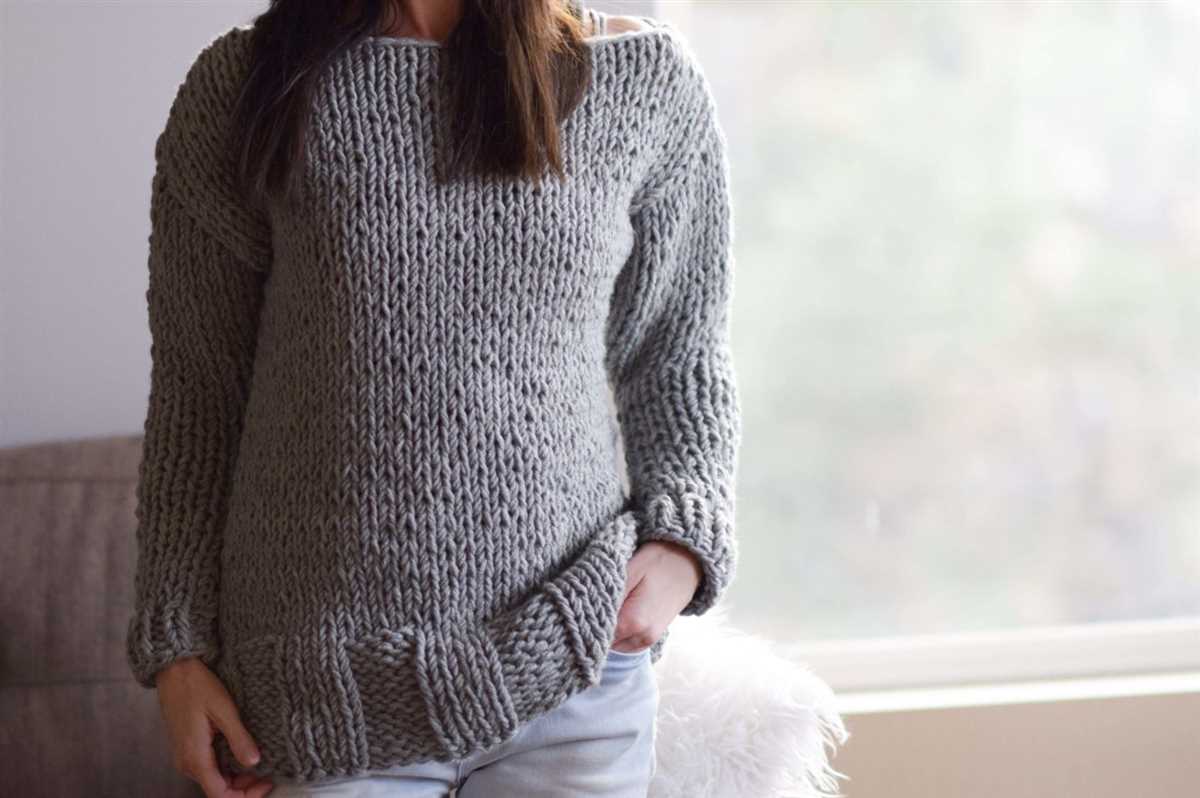
When it comes to knitting, chunky patterns offer a range of benefits that make it a popular choice among knitters of all skill levels. Whether you’re a beginner looking for a quick and easy project or an experienced knitter in need of a relaxing and satisfying project, chunky knitting patterns have you covered.
1. Speed and Efficiency: One of the greatest advantages of chunky knitting patterns is the speed at which you can complete a project. The thicker yarn and larger needles used in chunky knitting allow you to work up your project much faster compared to finer yarns. This means you can create beautiful and cozy accessories like hats, scarves, and blankets in a fraction of the time.
2. Instant Gratification: With chunky knitting, you can see the progress of your project quickly, which provides a sense of instant gratification. The larger stitches and bold textures created by chunky yarn make each row more visible, making it easier to see your progress and stay motivated throughout the project.
3. Warmth and Comfort: Chunky knitting patterns result in thick and warm finished products. The bulkiness of the yarn creates a cozy and insulated texture, perfect for winter accessories and home decor items. Additionally, the extra thickness of chunky knits adds a layer of comfort, making them ideal for snuggling up on chilly evenings.
4. Forgiving for Beginners: Chunky knitting patterns are a great choice for beginners as they are more forgiving when it comes to mistakes. The larger stitches make it easier to see and fix errors, allowing beginners to gain confidence and skill without feeling overwhelmed. It’s a great way to learn various knitting techniques while producing beautiful and practical items.
5. Stylish and Trendy: Chunky knits are not only practical but also fashionable. Chunky scarves, sweaters, and accessories are always on-trend and can add a stylish touch to any outfit. With a wide range of chunky knitting patterns available, you can create unique and eye-catching designs that reflect your personal style.
So, whether you’re in need of a quick project, want to stay warm and cozy, or simply want to create fashionable accessories, chunky knitting patterns offer numerous benefits that make them a popular choice among knitters. Get your chunky yarn and oversized needles ready, and enjoy the satisfying and rewarding experience of chunky knitting.
Choosing the Right Yarn for Chunky Knitting
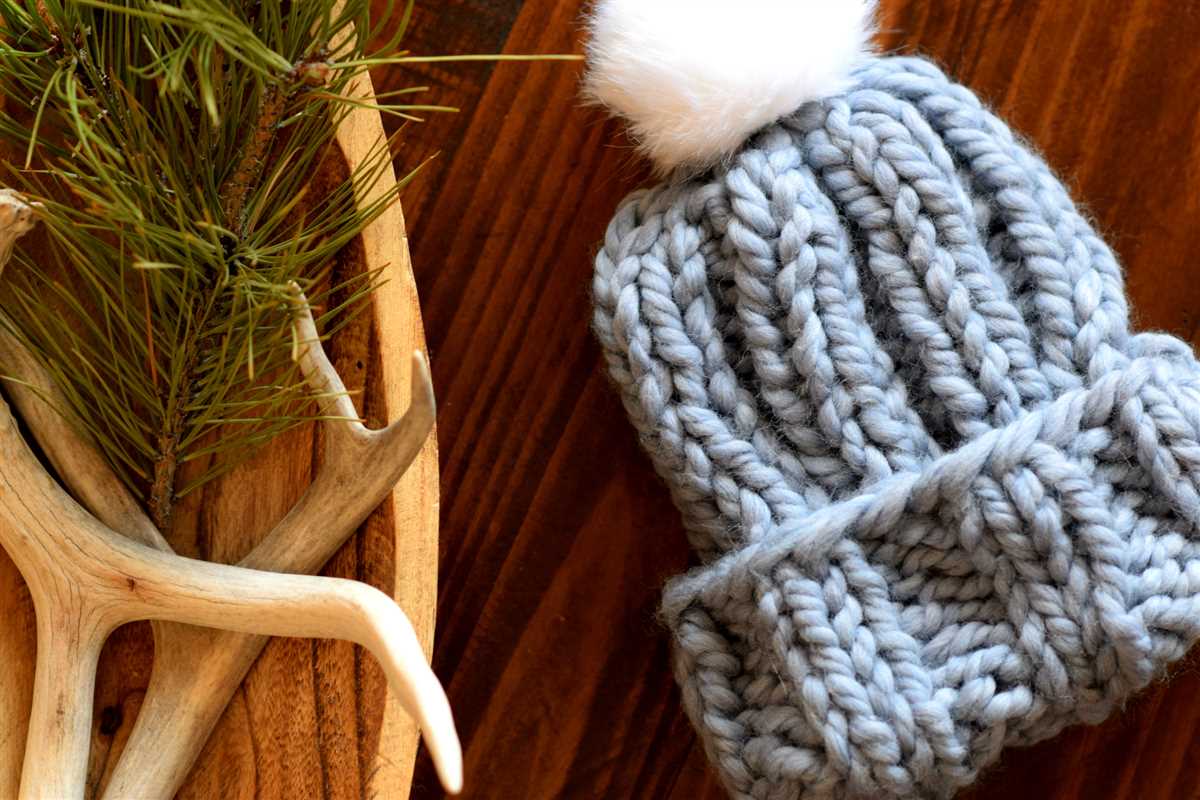
When it comes to chunky knitting, choosing the right yarn is essential for achieving the desired result. Chunky knitting patterns call for thick, bulky yarn that is both warm and cozy. There are a few key factors to consider when selecting the perfect yarn for your chunky knitting project.
Fiber content: The first consideration is the fiber content of the yarn. Common fibers used for chunky knitting include wool, acrylic, alpaca, and cotton. Each fiber has its own unique qualities, so it’s important to choose one that suits your preferences and the characteristics of your project. Wool is known for its warmth and durability, while acrylic is often chosen for its affordability and easy-care properties. Alpaca yarn provides a luxurious softness, and cotton is a great choice for warmer weather projects.
Weight and gauge: Another important factor to consider is the weight of the yarn and the gauge it produces. Chunky yarn typically falls into the category of 5 or 6 weight yarn, and it produces a larger gauge than finer yarns. It’s crucial to check the pattern’s gauge requirements and choose a yarn that matches it. Knitting with the wrong gauge yarn can result in a project that is too loose or too tight, so take the time to match the gauge for a successful outcome.
When shopping for chunky yarn, keep in mind not only the fiber content and weight, but also the color and texture of the yarn. These elements can add depth and interest to your knitting project. Take the time to explore different options and find a yarn that not only matches your project requirements but also brings you joy as you work with it. With the right yarn, your chunky knitting projects are sure to be a cozy and stylish success.
Understanding Yarn Weight
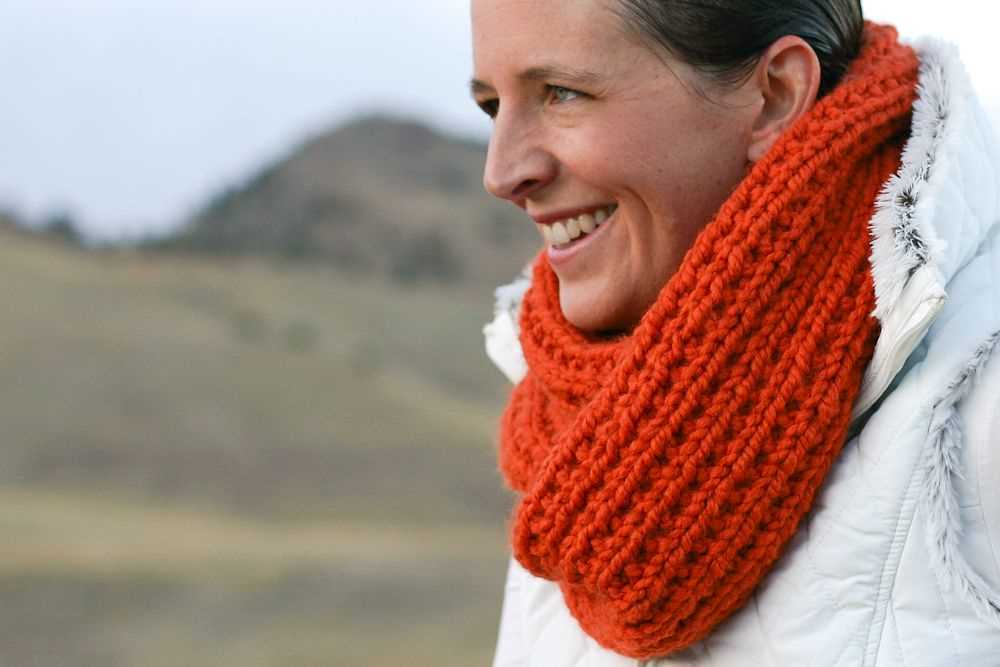
When it comes to knitting, one of the most important considerations is the weight of the yarn. The weight of the yarn determines the thickness and heaviness of the finished item, as well as the size of the needles required. Understanding yarn weight is essential for choosing the right materials for your project and ensuring that the finished product turns out as desired.
Yarn weight is typically classified on a scale from 0 to 7, with 0 being the thinnest and 7 being the thickest. Each weight category has a recommended range of needle sizes, knitting gauge, and project ideas. Here is a breakdown of the most commonly used yarn weights:
- Lace (0): Lace weight yarn is extremely thin and delicate. It is often used for lightweight shawls, doilies, and fine lacework. It is best used with small knitting needles (US 000-1) to create intricate and detailed patterns.
- Fingering (1): Fingering weight yarn is slightly thicker than lace weight. It is commonly used for socks, fine garments, and lightweight accessories. It is best used with small to medium-sized knitting needles (US 1-3) to create a tight and defined fabric.
- Sport (2): Sport weight yarn is versatile and can be used for a variety of projects such as baby garments, scarves, and lightweight sweaters. It is best used with medium-sized knitting needles (US 3-5) to create a balanced fabric with good drape.
- Worsted (4): Worsted weight yarn is the most common weight and is often used for a wide range of projects including hats, scarves, and sweaters. It is best used with medium to large-sized knitting needles (US 7-9) to create a sturdy and warm fabric.
- Bulky (5): Bulky weight yarn is thick and plush, making it perfect for cozy blankets, warm hats, and quick-knit projects. It is best used with large knitting needles (US 10-11) to create a thick and chunky fabric.
- Super Bulky (6): Super bulky weight yarn is extremely thick and results in a very chunky fabric. It is great for cozy winter accessories, such as scarves and cowls, and can be knit up quickly. It is best used with extra-large knitting needles (US 13 and above) to create a warm and bulky fabric.
- Jumbo (7): Jumbo weight yarn is the thickest and heaviest yarn available. It is often used for making oversized blankets, rugs, and home décor items. It is best used with extra-large knitting needles (US 19 and above) to create a super chunky and cozy fabric.
By understanding the different yarn weights and their recommended uses, you can confidently choose the right yarn for your project and create beautiful and well-fitting knitted items.
Recommended Yarns for Chunky Knitting
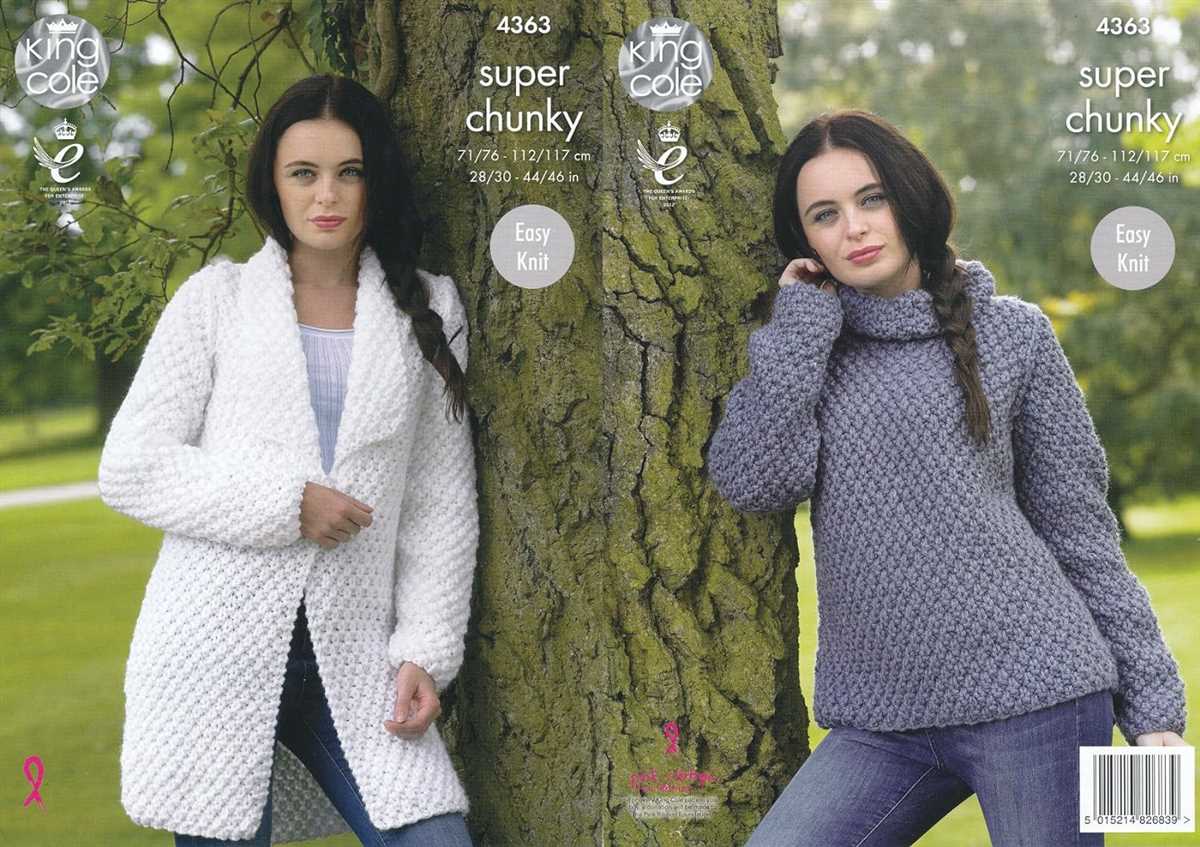
Chunky knitting is a popular technique that creates cozy and warm knitwear. When working on chunky knitting projects, it is important to choose the right yarn. The yarn you use can greatly affect the final result of your project, so it’s essential to select a yarn that is appropriate for chunky knitting.
Here are some recommended yarns for chunky knitting:
- Merino Wool: Merino wool is a soft and warm yarn that is perfect for chunky knitting. Its natural elasticity makes it easy to knit with and creates beautiful stitch definition. Merino wool also comes in many different colors, allowing you to create vibrant and eye-catching knitted pieces.
- Alpaca Blend: Alpaca blend yarns are another great option for chunky knitting. Alpaca fibers are known for their warmth and softness, and when blended with other fibers like acrylic or wool, they create a yarn that is both cozy and durable. Alpaca blend yarns are also lightweight, making them ideal for larger chunky knitting projects.
- Cotton Blend: For those who prefer a cooler option, cotton blend yarns are a good choice for chunky knitting. Cotton is a breathable fiber that is perfect for warmer climates or for individuals who are sensitive to wool. Cotton blend yarns come in a variety of weights, including chunky, and can create beautiful textured knits.
- Super Bulky Acrylic: Acrylic yarns are affordable and widely available, making them a popular choice for chunky knitting. Super bulky acrylic yarns are great for beginners, as they are easy to work with and can create quick and satisfying results. They also come in a wide range of colors, allowing you to unleash your creativity.
When choosing a yarn for chunky knitting, it’s important to consider the fiber content, weight, and texture that you desire for your project. By selecting the right yarn, you can ensure that your chunky knits are not only stylish but also comfortable and warm.
Essential Knitting Tools for Chunky Knitting Patterns
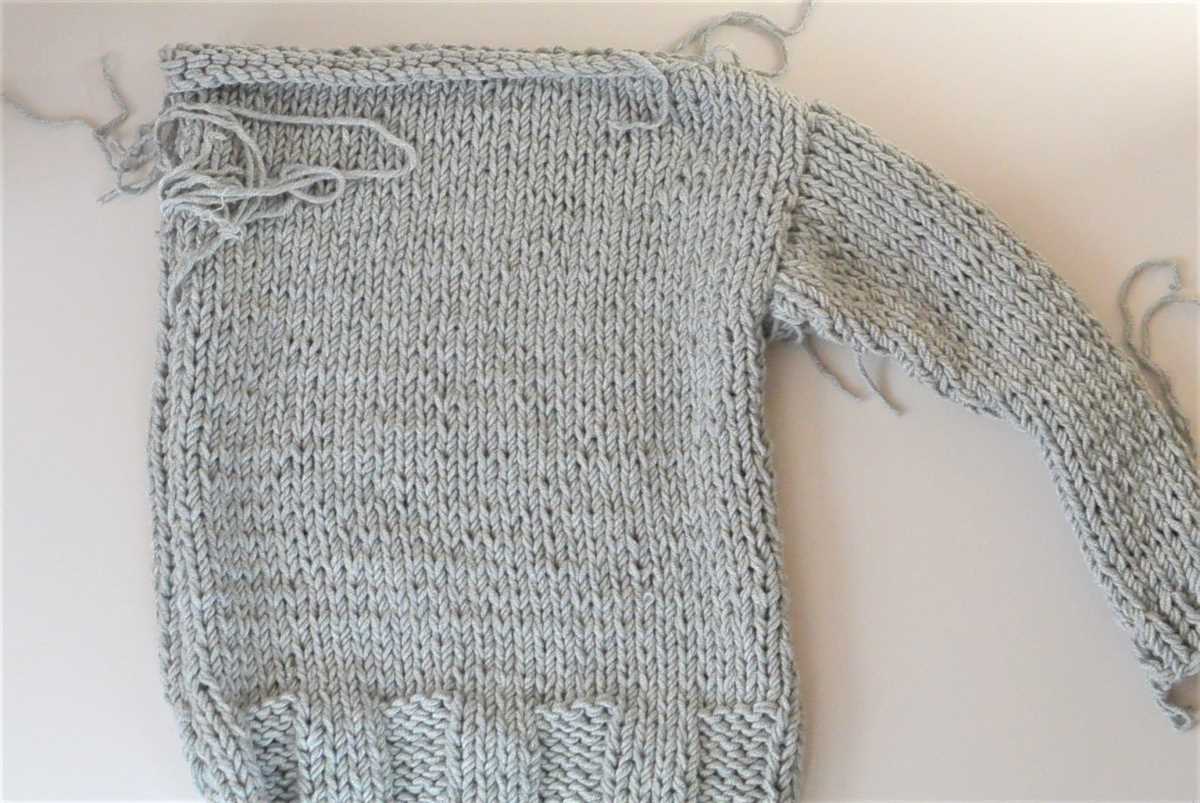
When it comes to chunky knitting patterns, having the right tools is essential for a successful and enjoyable knitting experience. Here are some must-have tools that every knitter needs:
1. Chunky Knitting Needles
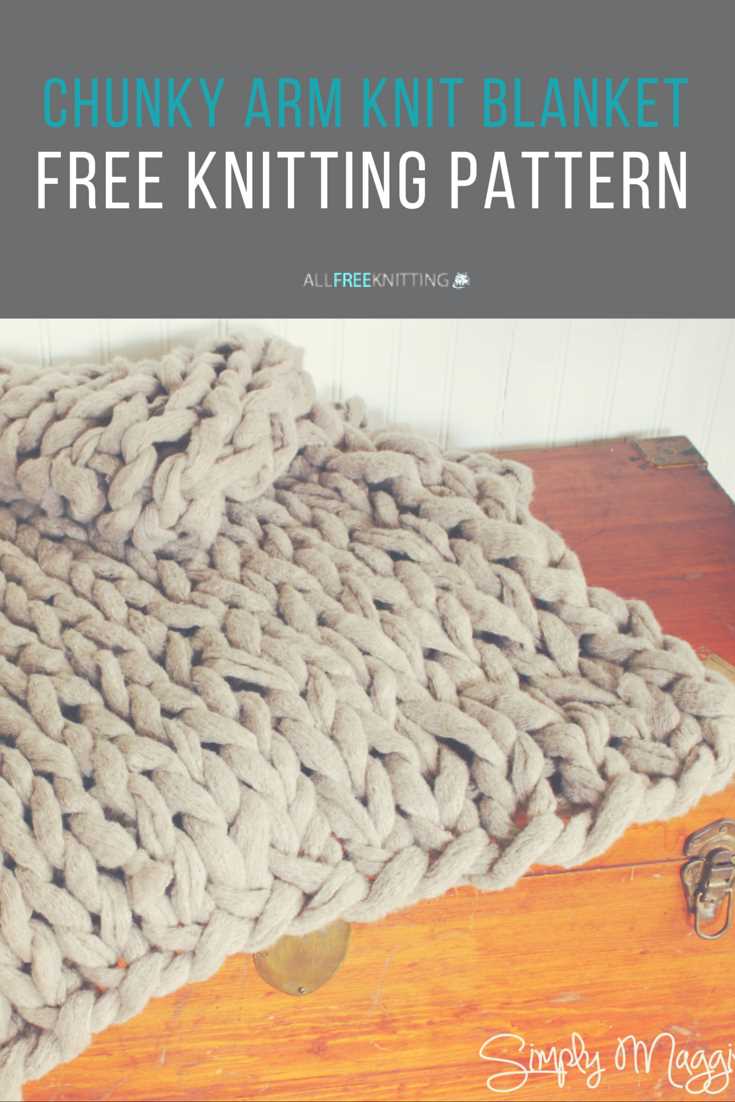
To create chunky knits, you’ll need thick knitting needles. Chunky knitting needles are typically larger and have a wider diameter than regular knitting needles. These needles allow for the larger stitches and thicker yarn used in chunky knitting patterns. Look for needles that are made from durable materials, such as bamboo or metal, to ensure they can handle the weight of the chunky yarn.
2. Chunky Yarn
The key to achieving a chunky knit is using yarn that is thick and bulky. Chunky yarn comes in various weights and fibers, such as wool, acrylic, or cotton. Choose a yarn that matches your desired texture and weight for the project. It’s important to check the label for the recommended needle size to ensure compatibility with your chunky knitting needles.
3. Stitch Markers
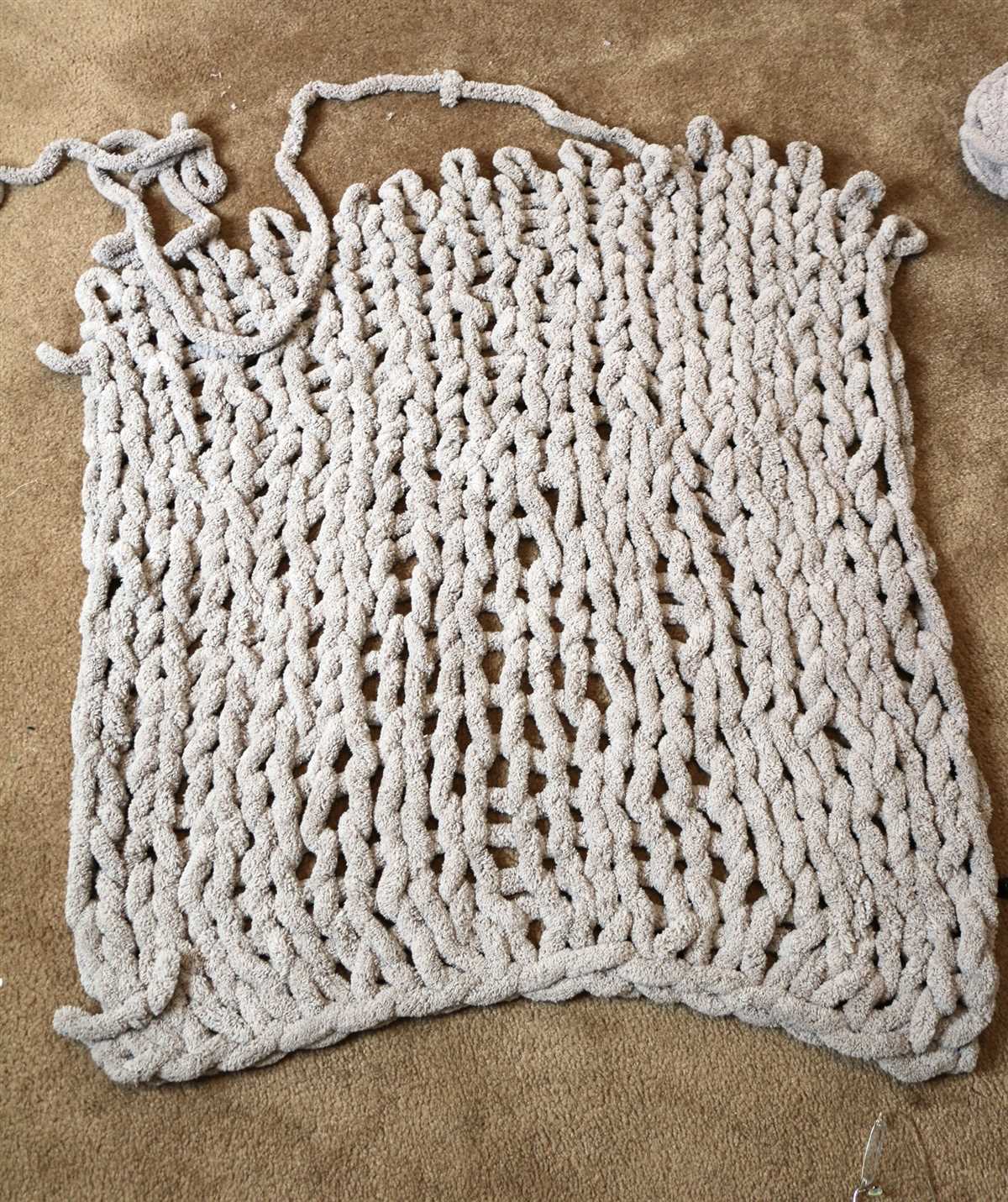
Stitch markers are essential for chunky knitting patterns to help you keep track of your stitches and pattern repeats. These small rings or clips are placed on the knitting needles to mark specific stitches or sections. They come in various shapes and colors, making it easy to differentiate between different markers. Stitch markers can be particularly helpful when working on complex stitch patterns or shaping.
4. Tape Measure
A good quality tape measure is an essential tool for any knitter. It helps you measure your gauge, check the size of your finished project, and ensure accurate sizing. When knitting chunky patterns, measurements become even more important to ensure the finished item fits properly. Look for a tape measure that has both metric and imperial units for versatility.
5. Scissors
Having a sharp pair of scissors is crucial for cutting yarn and making clean, precise cuts. Opt for small, compact scissors that are easy to carry in your knitting bag. Make sure they are sharp enough to cut through different types of yarn without fraying or damaging the fibers. A good pair of scissors is a long-lasting investment that will come in handy for all your knitting projects, including chunky knits.
These are just a few of the essential tools you’ll need for chunky knitting patterns. With the right tools in hand, you’ll be ready to tackle any chunky knitting project with confidence and create beautiful, cozy items to keep or give as gifts.
Knitting Needles
When it comes to chunky knitting patterns, choosing the right knitting needles is crucial. The size and material of the needles can greatly affect the outcome of your project. Chunky yarn requires larger needles to create the desired thickness and texture. So, be sure to check the recommended needle size for your chosen pattern.
Material: Knitting needles can be made from various materials, such as metal, wood, or plastic. Each material has its own advantages and disadvantages. Metal needles are durable and smooth, allowing the yarn to slide easily. Wood needles provide a warm feeling and better grip, making them ideal for beginners. Plastic needles are lightweight and affordable, but they may not be as durable as metal or wood.
Furthermore, the needle tips can be either pointed or blunt. Pointed tips are great for intricate stitch patterns, while blunt tips are more suitable for working with chunky yarns. Consider your skill level and the type of project you’re working on when choosing the needle tips.
Length: Another factor to consider is the length of the knitting needles. The length depends on the type of project you’re working on. Longer needles are perfect for large projects such as blankets or sweaters, as they can hold a larger number of stitches. Shorter needles are better for smaller projects like baby hats or scarves.
Finally, don’t forget to take into account your personal preferences and knitting style. Some knitters prefer circular needles for chunky knitting, as they provide more flexibility and can hold a larger number of stitches. Others prefer straight needles for a more traditional knitting experience.
In conclusion, choosing the right knitting needles for your chunky knitting patterns is essential for achieving the desired results. Consider the size, material, length, and your personal preferences to enhance your knitting experience and create beautiful projects.
Other Tools and Accessories
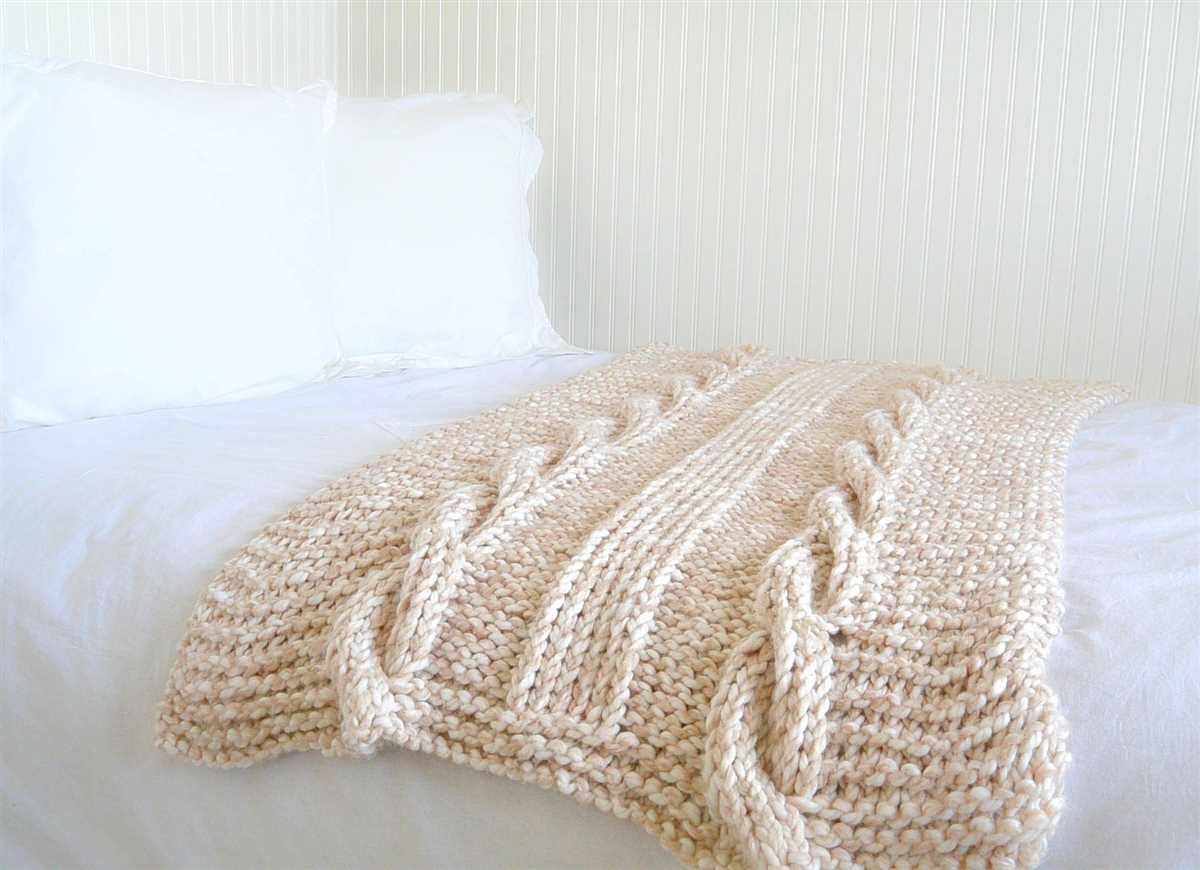
When it comes to chunky knitting, having the right tools and accessories can make all the difference in your knitting experience. Here are some essential items to consider:
Knitting Needles

Choosing the right knitting needles is crucial for achieving the desired results in your chunky knitting projects. Look for needles that are specifically designed for chunky yarns, as they will have a larger diameter to accommodate the thicker yarn. Circular needles are often preferred for chunky knitting, as they allow you to easily tackle larger projects like blankets or oversized sweaters.
Stitch Markers
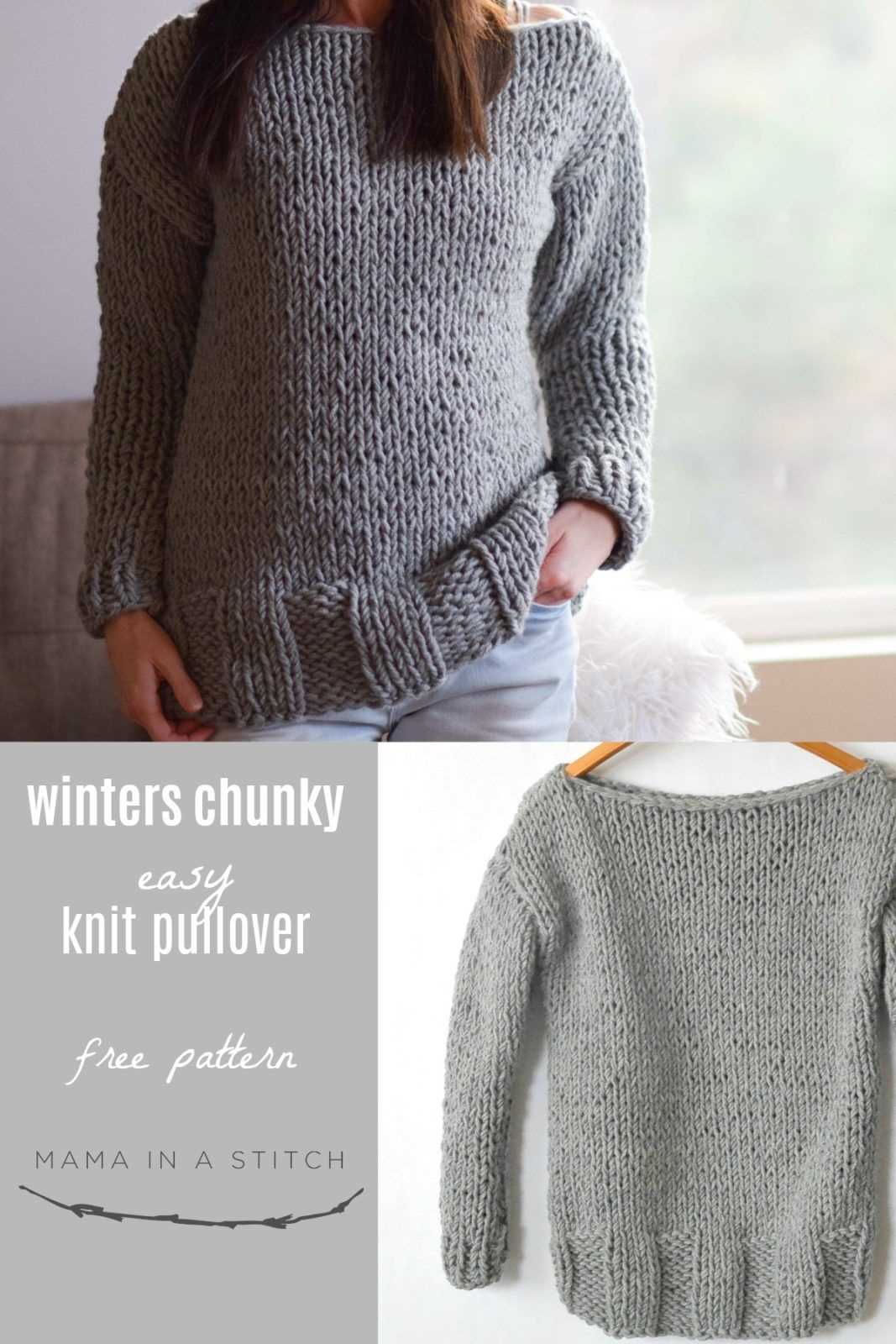
Stitch markers are handy tools that help you keep track of your stitches, especially when working on complicated patterns. They can be particularly useful when knitting with chunky yarn, as the thicker yarn can sometimes make it harder to distinguish individual stitches. Use stitch markers to mark the beginning of a round or to highlight specific parts of your pattern.
Row Counter
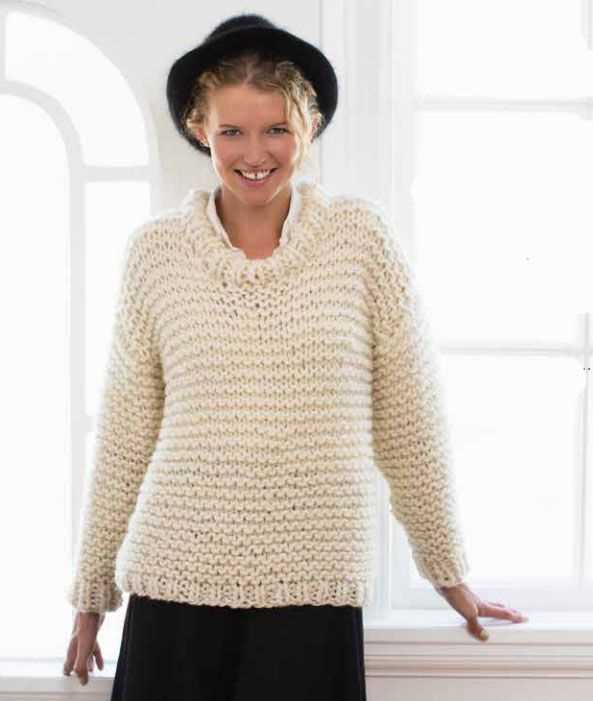
A row counter is an essential tool for keeping track of the number of rows you have knitted. This is especially important in chunky knitting where the stitches are larger and it can be more challenging to accurately count your rows. A row counter can help you avoid mistakes and ensure that your finished project has an even number of rows.
Cable Needles
If you plan on incorporating cable patterns into your chunky knitting, a cable needle will be a useful addition to your toolbox. Cable needles are specially designed to hold stitches in a secure manner while you cross them over each other. They come in various sizes and shapes, so make sure to choose one that matches the thickness of your chunky yarn.
Yarn Bowl
Chunky yarn can be quite bulky and prone to rolling away as you work. A yarn bowl can help keep your yarn in place, preventing tangles and making it easier for you to grab the yarn when you need it. Look for a yarn bowl with a wide circumference and a smooth interior to ensure that your chunky yarn can flow freely as you knit.
In addition to these tools, it’s always a good idea to have a tape measure, scissors, and a darning needle on hand for finishing touches and sewing up any seams. With the right tools and accessories, you’ll be well-prepared to tackle your next chunky knitting project with ease.
Basic Chunky Knitting Stitches
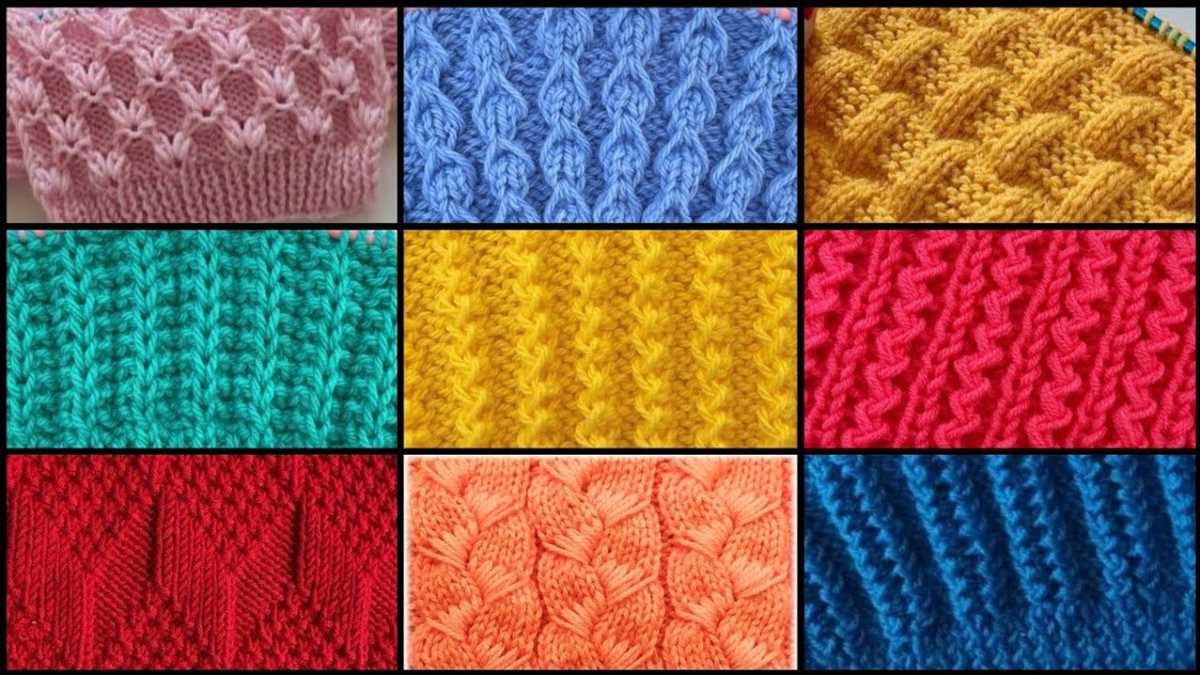
When it comes to chunky knitting, there are a few basic stitches that are commonly used. Learning these stitches will allow you to create a variety of beautiful and cozy knitted items. Whether you are a beginner or an experienced knitter, mastering these stitches is essential.
Garter stitch: One of the simplest stitches in knitting, the garter stitch is created by knitting every row. This stitch creates a textured fabric that is reversible and perfect for scarves and blankets. To practice this stitch, all you need to do is knit every stitch on every row.
- Stockinette stitch: This is another basic stitch that is commonly used in knitting. It is created by alternating rows of knit stitches and purl stitches. The right side of the fabric will have a smooth, v-shaped texture, while the wrong side will have a bumpy texture. This stitch is great for creating sweaters, hats, and other garments.
- Ribbing: Ribbing is commonly used for cuffs, collars, and hems. It creates a stretchy and elastic fabric. There are different ribbing patterns, but the most common one is the knit 1, purl 1 rib. To create this rib, alternate knitting one stitch and purling one stitch across the row. Repeat this pattern for as many rows as desired.
- Seed stitch: The seed stitch creates a textured fabric with small, raised bumps. It is created by alternating knit and purl stitches within the same row. For example, you can start with a knit stitch, followed by a purl stitch, and then repeat this pattern across the row. On the next row, you will knit the purl stitches and purl the knit stitches. This stitch is great for adding texture to blankets, scarves, and hats.
Once you have mastered these basic chunky knitting stitches, you can experiment with different patterns and combinations to create unique and personalized projects. Whether you want to knit a warm and cozy blanket or a stylish sweater, these stitches will provide you with a solid foundation to build upon.
Garter Stitch
Garter stitch is one of the most basic knitting patterns, and it creates a textured fabric that is reversible and stretchy. It is characterized by rows of knit stitches on both sides of the fabric, giving it a bumpy appearance. This stitch is often used for beginner projects because it is easy to learn and perfect for practicing the basic knitting techniques. The garter stitch can be used to create scarves, blankets, sweaters, and other cozy accessories.
To knit the garter stitch, you simply knit every row. This creates a fabric that has a lot of give and stretch, making it perfect for items such as blankets or scarves that need to be soft and flexible. Garter stitch is also great for showing off the texture and color of the yarn you are using. It works well with both solid and variegated yarns, allowing you to create interesting and eye-catching patterns with just a simple knit stitch.
When working on your garter stitch project, it is important to maintain consistent tension in your stitches to ensure an even and professional appearance. You can achieve this by using the same size needles throughout your project and by practicing proper knitting technique. The garter stitch is a versatile pattern that can be used to create a variety of projects, whether you are a beginner or an experienced knitter. So grab your knitting needles and start stitching up something cozy and stylish with the garter stitch!
Stockinette Stitch
The stockinette stitch is a basic knitting stitch pattern that creates a smooth and even fabric. It is commonly used in many knitting projects, including easy chunky knitting patterns. This stitch pattern is created by alternating knit and purl stitches in consecutive rows. The result is a fabric with rows of “V” shapes on one side and smooth, flat stitches on the other side.
To create the stockinette stitch, you simply knit one row and purl one row, repeating this pattern until the desired length is reached. This stitch pattern is great for beginners as it is easy to learn and creates a simple and versatile fabric.
Benefits of using stockinette stitch in chunky knitting patterns:
- The stockinette stitch creates a clean and uniform fabric, making it perfect for showcasing the texture and thickness of chunky yarn.
- It is a fast and efficient stitch pattern, as the alternating knit and purl rows are easy to memorize.
- Chunky knitting patterns using stockinette stitch can produce cozy and warm garments or accessories, perfect for colder seasons.
- The fabric created by stockinette stitch has a good amount of stretch, making it comfortable to wear.
When working with chunky yarn, the stockinette stitch can help highlight the yarn’s natural texture and create a beautiful and cozy finished piece. Whether you’re knitting a chunky sweater, scarf, or hat, the stockinette stitch is a go-to choice for its simplicity and versatility.
Rib Stitch
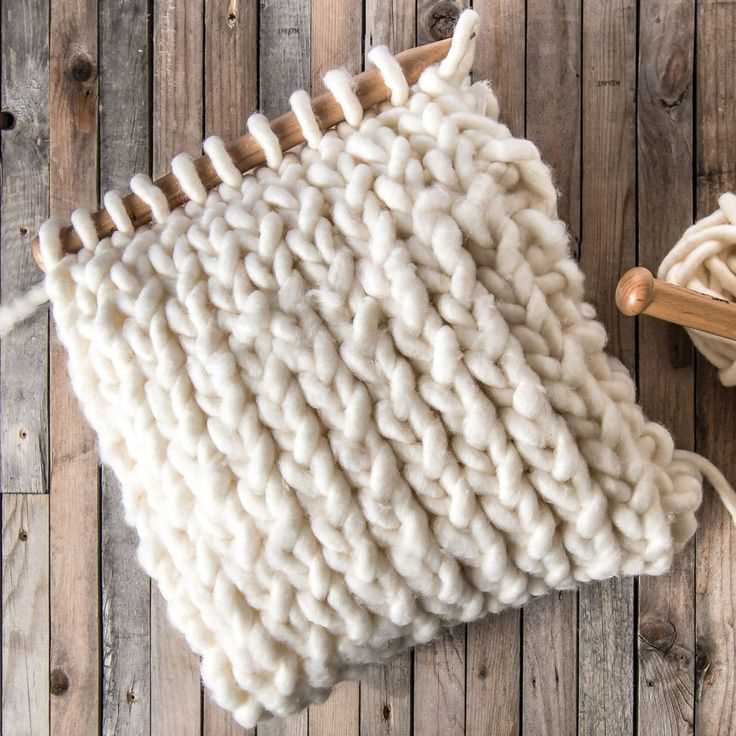
The rib stitch is a versatile and commonly used knitting pattern that creates a stretchy and textured fabric. It is often used for cuffs, edges, and other areas that require elasticity. The rib stitch involves alternating knit and purl stitches in a specific pattern, creating a series of columns and ridges.
The most basic form of rib stitch is the 1×1 rib, where you alternate between knitting one stitch and purling one stitch. This creates a fabric that resembles vertical ribbing. The 2×2 rib is another popular variation, where you alternate between knitting two stitches and purling two stitches.
To knit the rib stitch:
- Cast on an even number of stitches.
- Row 1: *Knit 1, purl 1* repeat across the row.
- Repeat Row 1 for the desired length.
The rib stitch can be used to create a wide range of projects, from scarves and hats to sweaters and blankets. It is particularly well-suited for projects where a flexible and cozy fabric is desired, such as winter accessories. The stitch pattern’s elasticity ensures a snug fit, while the textured ridges add visual interest to the finished piece.
Experimenting with different combinations of knit and purl stitches in the rib stitch can create even more intricate patterns, such as the fisherman’s rib or brioche stitch. These variations can add depth and complexity to your knitting projects, making them stand out and showcase your skills.
Conclusion

Chunky knitting is a great option for beginners who want to create cozy and stylish pieces. With its larger yarn and needles, it is easier to see your stitches and progress quickly. There are a variety of easy chunky knitting patterns to choose from, including scarves, hats, and blankets.
Whether you are looking to make a quick and simple project or want to challenge yourself with new techniques, chunky knitting is a versatile and enjoyable craft. Don’t be afraid to experiment with different yarns and colors to create unique and personalized pieces.
So, grab your chunky yarn and oversized needles, and get started on your knitting journey. With these easy chunky knitting patterns, you will be able to create beautiful and cozy items in no time. Happy knitting!